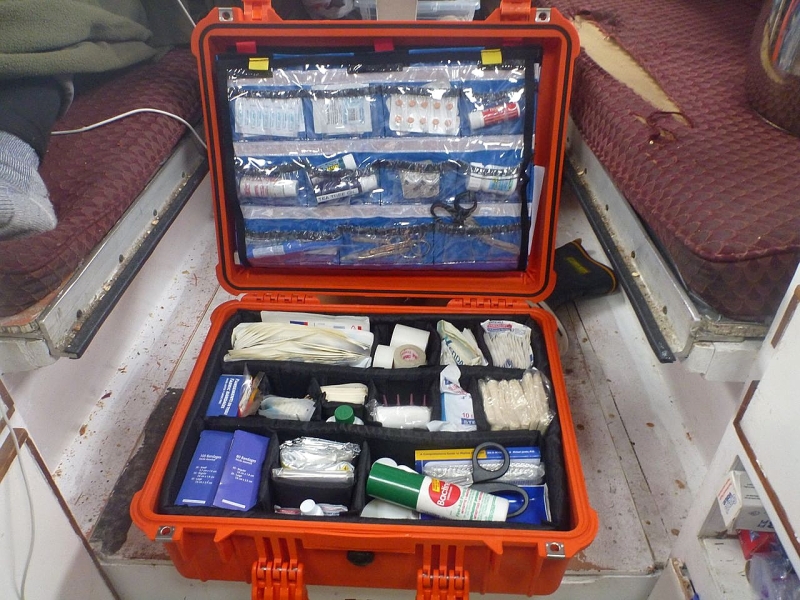What’s in Your First-Aid Kit?
27th November 2023
Scrapes, cuts, and bruises are all part of life on and off our boats. Being able to deal with medical situations appropriately makes them minor annoyances rather than emergencies. An on board first-aid kit is your first line of defense.
The kit’s contents should enable the crew to initiate appropriate care for common medical problems encountered in the marine environment. If you are within 12 hours of medical care, as are most coastal cruisers, your requisite supplies are different than if you are headed offshore. The further you are from help, the larger the required inventory.
It is useful to have a separate, easily accessible crew medical kit containing medications and supplies for managing common medical problems. Having a separate crew kit encourages prompt treatment and ensures that supplies in the ship’s primary medical kit are left intact, inventoried, organized, and protected.
A partial list of the contents of the crew kit would include seasickness medications, sunscreen, lip balm, aloe vera gel, eyewash, cortisone cream, ibuprofen, acetaminophen, aspirin, and other commonly used non-prescription medications, such as antihistamines, antacids, drugs for diarrhea or constipation, etc. Be sure to stock wound-care materials for minor cuts and scrapes, including a variety of small waterproof adhesive bandages, antiseptic wipes, and antibiotic ointment.

If any crewmember suffers from severe anaphylactic reactions, be sure to stock some epinephrine auto-inject pens in the crew kit – and know how to use them.
Trauma supplies are the major components of any vessel’s medical kit. After seasickness, wounds are the most common medical problem. While closing a wound may be considered optional, cleaning and properly dressing it is not.
Wound-care supplies should include nitrile gloves, anaesthetic wipes, povidone-iodine for making an irrigating solution, a 20cc syringe for irrigation, tincture of benzoic swabs, and wound-closure strips. There should be a variety of waterproof adhesive bandages, assorted sterile and non-sterile gauze pads, non-adherent dressings, conforming gauze bandages, self-adhering elastic bandages, and waterproof tape. Small tweezers are helpful for splinter and tick removal and can be useful in removing debris from a wound. Burns from hot liquids are best treated with water gel burn dressings.
Fractures and sprains are common and are best stabilized with a foam-padded aluminium splint, which can be moulded to fit any section of an extremity. A compression elastic bandage holds the splint in place. Small splints are designed for broken fingers and toes, a common injury aboard boats. Splinting reduces pain and prevents further injury to the surrounding nerves, blood vessels and muscles.
A CPR face shield belongs in every marine kit. It facilitates effective resuscitation of a drowning victim and may protect the rescuer from contagious diseases. Be sure to take an up-to-date CPR and first-aid course.
It often makes sense to purchase a kit “off the shelf” and supplement the contents as you wish. Most importantly, know how to use the first-aid kit supplies inside.


